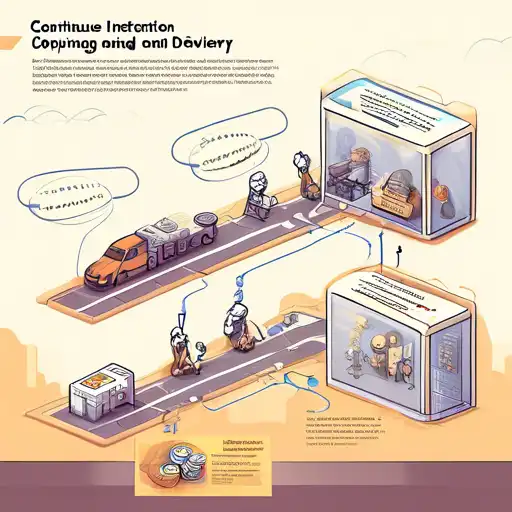What is Continuous Integration and Delivery?
Continuous Integration (CI) and Continuous Delivery (CD) are fundamental practices in modern software development, aimed at improving the speed and quality of software releases. CI/CD automates the integration of code changes from multiple contributors into a single software project, ensuring that the software can be reliably released at any time.
The Benefits of CI/CD
Implementing CI/CD brings numerous benefits to software development teams, including:
- Reduced integration problems
- Faster release cycles
- Higher quality software
- Improved team productivity
By automating the build, test, and deployment processes, teams can focus more on development and less on the manual tasks associated with software releases.
How CI/CD Works
CI/CD pipelines are the backbone of these practices. A typical pipeline includes the following stages:
- Code commit: Developers push code changes to a shared repository.
- Automated build: The system compiles the code into executable artifacts.
- Automated testing: Various tests (unit, integration, etc.) are run to ensure code quality.
- Deployment: The code is deployed to production or staging environments.
This automation ensures that every change is tested and ready for release, minimizing the risk of errors in production.
Best Practices for Implementing CI/CD
To maximize the benefits of CI/CD, teams should adhere to the following best practices:
- Maintain a single source repository
- Automate the build process
- Make the build self-testing
- Ensure fast builds
- Test in a clone of the production environment
- Make it easy to get the latest deliverables
- Everyone can see the results of the latest build
Adopting these practices helps teams to achieve a seamless and efficient CI/CD pipeline.
Challenges and Solutions
While CI/CD offers many advantages, teams may face challenges such as resistance to change, integration complexities, and maintaining test coverage. Overcoming these challenges requires a combination of technical solutions, such as selecting the right tools, and cultural shifts, like fostering a DevOps culture within the organization.
In conclusion, Continuous Integration and Delivery are transformative practices that enable teams to deliver high-quality software rapidly and reliably. By understanding and implementing CI/CD effectively, organizations can stay competitive in the fast-paced world of software development.
